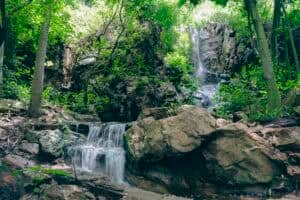The chicks' parents likely abandoned them due to lack of food.

An epic rescue operation to save close to 1700 Cape cormorant chick conducted earlier in January has been a raging success.
The operation was undertaken by the Southern African Foundation for the Conservation of Coastal Birds (SANCCOB), the Robben Island Museum (RIM), the Two Oceans Aquarium and the National Sea Rescue Institute (NSRI) on 12 and 13 January, after the chicks were abandoned by their parents.



As the chicks were too young to fend for themselves, their future involved certain death, until the rescue operation, the second-biggest in the Western Cape, commenced. Some chicks did perish, but the majority of the young birds were saved.


SANCCOB researchers suspect lack of food to be the main reason for the mass abandonment.
“Cape cormorants feed mainly on anchovy, and to a smaller extent, on sardines, and these small pelagic fish species are at very low levels at the moment,” said SANCCOB research manager Dr Katta Ludynia.

Ludynia said a number of fish species were in short supply at the moment, which results in “dramatic population declines”.

Some of these include the African penguin, the Cape gannet and the Cape cormorant, all of which are currently listed as endangered by the International Union for Conservation of Nature (IUCN).
“Lack of sufficient food is the primary factor for the most recent declines observed,” Ludynia said.

At first, it was thought that the adult Cape cormorants may have floated out to sea to cool down.
This was disputed by Ludynia, who explained that these birds were summer breeders, and were used to hot weather.
She said a recent study on cormorant species did not find abandonment at high temperatures to be a factor, especially not what was witnessed recently.

During the rescue operation, the NSRI’s Table Bay station dispatched a rescue party and sea raft. They then boxed and transported the chicks to the mainland.

As soon as the chicks arrived at SANCCOB’s seabird hospital, they were weighed and hydrated quickly, to reduce their stress, and placed in designated pens according to their weight.
Veterinarians then assessed each chick. The chicks weighed between 150g and 600g.

The high survival rate of the rescued chicks is due to speedy, coordinated action and the careful watchful eyes of RIM and SANCCOB’s penguin and seabird rangers.
92 of 800g-900g #Capecormorant chicks moved to a specially erected aviary on-site today. Sadly, about 9% of chicks rescued died within the first 24 hours of admission. Deaths & sick chicks in ICU lessens every day. Rescue story at https://t.co/IMrkHHuKJH. #endangeredspecies pic.twitter.com/5KACFMHZPT
— SANCCOB (@SANCCOB) January 24, 2021
The adults were gone for just hours before the alarm was raised that the chicks were in peril.
But the incident still bothers experts who noted the unusual activity of the adult Cape cormorants.
RIM head of heritage and research Thabo Seshoka said it was “an anomaly that both RIM and SANCCOB are studying”.

He explained that 186 bird species made use of Robben Island to breed, which was why it was a Marine Protected Area. The island was more than a World Heritage site. The constant breeding activity “underpins the need for responsible tourism on the island”, Seshoka added.


“Conservation is central to the Robben Island Museum’s mandate as a museum. Although the island was proclaimed a World Heritage Site in 1999 under the category of cultural landscapes, fauna and flora form part of our valuable heritage assets and must be prudently conserved and sustained at all times.
“We appreciate our collaboration with SANCCOB as it bolsters our efforts in managing the island as an integrated resource,” Seshoka said.

If you would like to donate funds to help SANCCOB look after the surviving chicks, click here.

For more news your way, download The Citizen’s app for iOS and Android.






